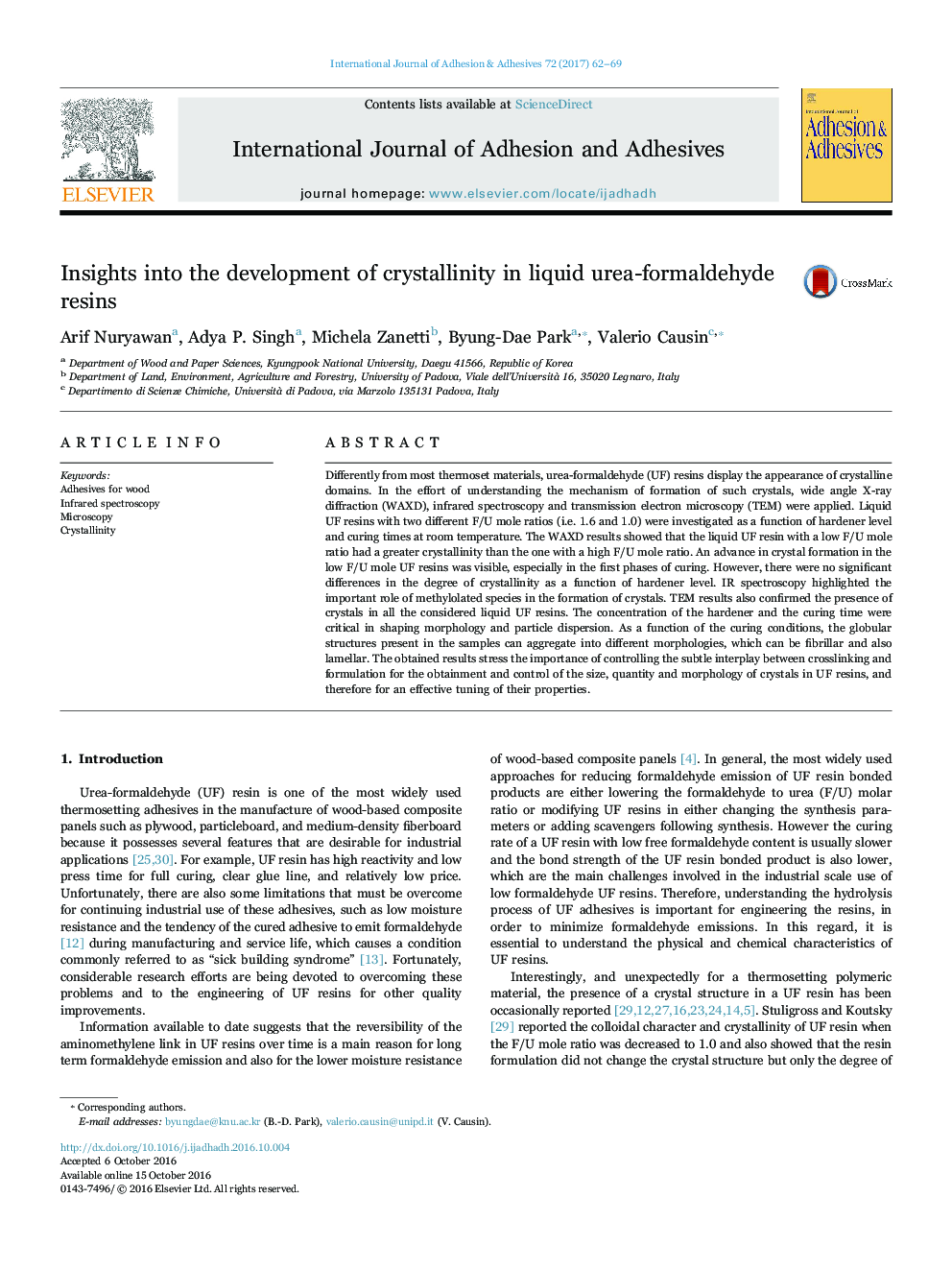| Article ID | Journal | Published Year | Pages | File Type |
|---|---|---|---|---|
| 5014684 | International Journal of Adhesion and Adhesives | 2017 | 8 Pages |
Abstract
Differently from most thermoset materials, urea-formaldehyde (UF) resins display the appearance of crystalline domains. In the effort of understanding the mechanism of formation of such crystals, wide angle X-ray diffraction (WAXD), infrared spectroscopy and transmission electron microscopy (TEM) were applied. Liquid UF resins with two different F/U mole ratios (i.e. 1.6 and 1.0) were investigated as a function of hardener level and curing times at room temperature. The WAXD results showed that the liquid UF resin with a low F/U mole ratio had a greater crystallinity than the one with a high F/U mole ratio. An advance in crystal formation in the low F/U mole UF resins was visible, especially in the first phases of curing. However, there were no significant differences in the degree of crystallinity as a function of hardener level. IR spectroscopy highlighted the important role of methylolated species in the formation of crystals. TEM results also confirmed the presence of crystals in all the considered liquid UF resins. The concentration of the hardener and the curing time were critical in shaping morphology and particle dispersion. As a function of the curing conditions, the globular structures present in the samples can aggregate into different morphologies, which can be fibrillar and also lamellar. The obtained results stress the importance of controlling the subtle interplay between crosslinking and formulation for the obtainment and control of the size, quantity and morphology of crystals in UF resins, and therefore for an effective tuning of their properties.
Related Topics
Physical Sciences and Engineering
Engineering
Mechanical Engineering
Authors
Arif Nuryawan, Adya P. Singh, Michela Zanetti, Byung-Dae Park, Valerio Causin,
